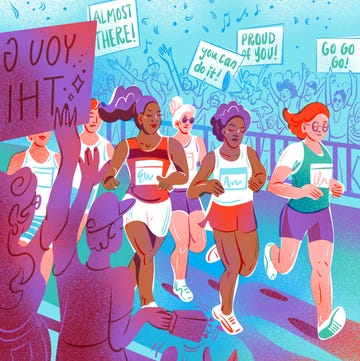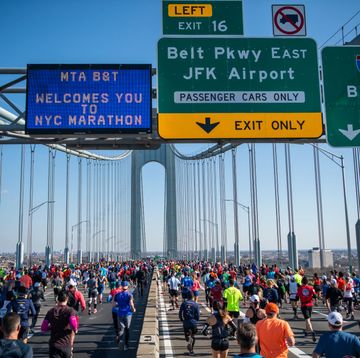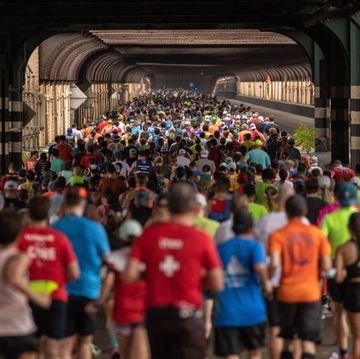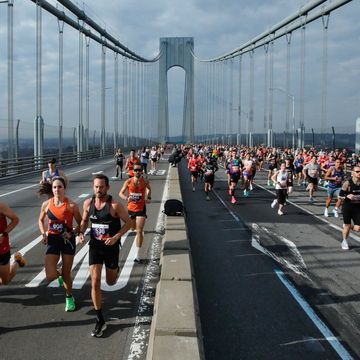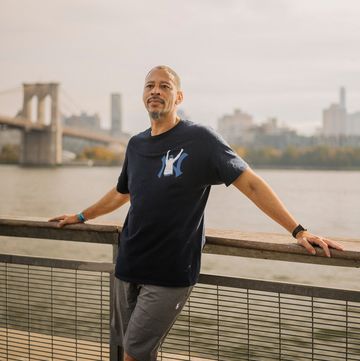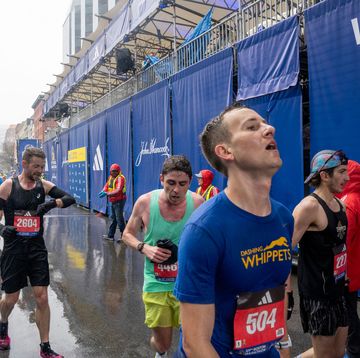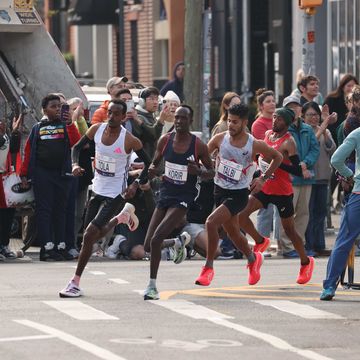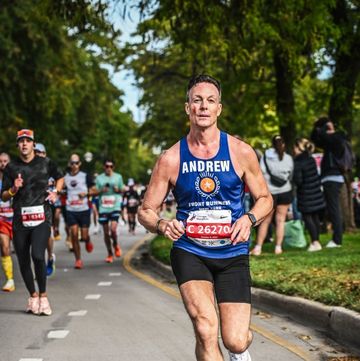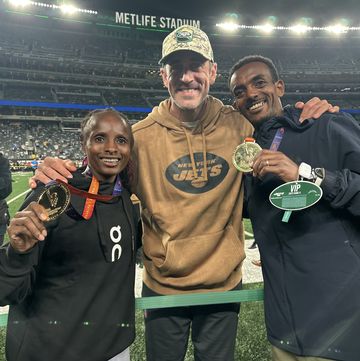Forty years ago, October 22, 1978, Grete Waitz single-handedly transformed the women’s marathon in New York City.
Unheralded and unprepared, she broke the world record by more than two minutes (2:32:29.8) and lifted women’s marathoning beyond the pioneering era. The 40th anniversary of this most dramatic debut is celebrated in New York this week, especially by her long-term sponsor, Adidas. New York Road Runners honored her at the annual race (now a 10K) named for her, Grete’s Great Gallop, on October 6.
In 1978, all the prerace talk was about Christa Vahlensieck of Germany, who came in as the world record holder, with 2:34:48 to win the Berlin Marathon in 1977. Some thought Marty Cooksey from California might figure, after her surprise win in the first Avon Marathon in Atlanta seven months earlier, though her 2:46:16 would leave her almost two miles behind Vahlensieck at her best. No other challenge looked possible. Defending champion and two-time winner Miki Gorman was 43 years old, and slowing.
So even the most expert among the media were bewildered when reports trickled through that a tall woman with pigtails, with an unlisted bib number, was building a huge lead. She wore a plain white top and red shorts, and she had run with Vahlensieck to 13.1 miles—looking as if she found the pace easy—then went past into the lead.
In those days all the cameras were on Bill Rodgers as he won his third New York title. There was no separate TV coverage of the women’s race, no images, no official spotters, no cellphones, no chip mats. Who was she? Was she for real?
It didn’t take long to be sure. She won by more than 10 minutes. Vahlensieck dropped out. Soon, they knew the new champion was Norwegian and well established as a world-class athlete: twice a world record breaker at 3,000 meters and a world cross-country champion in March 1978. But in that pre-professional era, she was also a full-time school-teacher who had never raced in America.
Even her true track ability had been concealed by the lack of any top-level track distance for women longer than 3,000 meters, and by the dominance in those years of steroidal stars from Eastern Europe. But she had by far the best track credentials of any woman who had yet tried the marathon, with times of 4:16 for 1500 meters (equivalent to a 4:36 mile), 8:43:50 for 3,000 meters. She was also a two-time track Olympian and European bronze medalist at 1500 meters.
At the time, before all this was known, the 1978 New York City Marathon looked an astonishing outsider’s victory. No one but race director Fred Lebow even knew she was in the race. Her husband, Jack Waitz, had suggested that she try the marathon, as her track career seemed stalled. Lebow gave her a last-minute slot as a likely pacesetter. With fares paid from Norway, the Waitzes took the opportunity of enjoying a short prerace holiday in Manhattan.
There was no publicity, no press interviews, no pressure. She wore bib F1173, not an elite single digit number.
Having never before run more than 12 miles, even in training, Waitz found the last miles so hard that when Jack came over to congratulate her, she angrily threw her shoes at him.
She never lost her temper again. Beneath the famously calm surface of Nordic cool was soon evident an affectionate temperament and deep loyalty. Waitz became devoted to New York, and the devotion was reciprocated. Amby Burfoot, in his book First Ladies of Running, describes how the day after the race she telephoned her school principal in Norway to ask for some extra days off so she could respond to the massive media demands. As she compiled her nine marathon victories in front of adoring crowds, three times in world records, Waitz became maybe the most recognized woman in New York after the Statue of Liberty.
For years, she dominated the growing American racing circuit, winning Peachtree (four times), Falmouth, Gasparilla, and many more. But it is New York that lays special claim to her, and there she is still revered, seven years after her death from cancer in 2011. As well as her nine marathons (1978-86), she won the the New York Mini 10K in Central Park five times (1979-84), twice in world records.
The bond went deeper than winning races. On their many visits, Grete and Jack made close friendships. After retirement from serious running in 1990, she served as the highly regarded chair of the New York Road Runners children’s foundation (now Rising New York Road Runners), until she became ill, when she cofounded the charity AKTIV Against Cancer, which promotes the value of exercise as part of cancer treatment.
Most memorably, in 1992, she helped create a day of unforgettable emotion by accompanying Lebow for the whole marathon distance when he finally fulfilled his ambition to run his own race, during brief remission from brain cancer. The images of the usually impassive Waitz holding Lebow’s hand aloft as he finished, tears streaming down her face, are an important part of the New York legend of Grete Waitz that began with her astonishing first marathon 40 years ago.

Roger Robinson is a highly-regarded writer and historian and author of seven books on running. His recent Running Throughout Time: the Greatest Running Stories Ever Told has been acclaimed as one of the best ever published. Roger was a senior writer for Running Times and is a frequent Runner’s World contributor, admired for his insightful obituaries. A lifetime elite runner, he represented England and New Zealand at the world level, set age-group marathon records in Boston and New York, and now runs top 80-plus times on two knee replacements. He is Emeritus Professor of English at Victoria University of Wellington, New Zealand, and is married to women’s running pioneer Kathrine Switzer.


